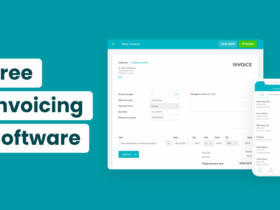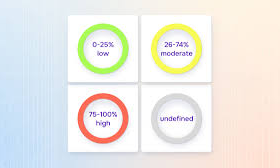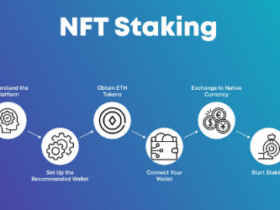What Is Crypto Airdrop?
Giving away free tokens or cryptocurrency to a particular set of wallet addresses on a blockchain network is known as a crypto airdrop. Blockchain projects and cryptocurrency businesses utilise this kind of marketing to raise awareness, interact with users, and encourage acceptance of their digital assets. The scope and magnitude of airdrops can vary, from tiny distributions to current token holders to major events accessible to the whole cryptocurrency community.
A portion of the new cryptocurrency is frequently given to participants for free; this quantity can occasionally vary depending on their past ownership of a certain token or their participation in a particular blockchain network.
Crypto airdrops are intended to build a community around a certain cryptocurrency, attract interest in the project, and increase user base size—all of which will ultimately increase ecosystem growth and liquidity. In the event that the project is successful in the future, participants may earn value by obtaining fresh tokens at no cost.
What Is SatoshiVM Airdrop?
SatoshiVM Airdrop is a decentralized Bitcoin ZK Rollup Layer 2 solution compatible with the Ethereum Virtual Machine (EVM) ecosystem, using native BTC as gas. SatoshiVM bridges the EVM ecosystem with Bitcoin, enabling the Bitcoin ecosystem to issue assets and develop applications.
SatoshiVM has confirmed to launch their token “SAVM” in the future. Users can now test the bridge on the newly launched testnet and stand a chance to receive an airdrop when the token goes live.
Basic SatoshiVM Airdrop Points
| Basic | Details |
|---|---|
| Token Name | SatoshiVM Airdrop |
| Platform | ETH |
| Support | 24/7 |
| Total value | n/a |
| KYC | KYC Is Not Requirement |
| Whitepaper | Click Here To View |
| Max. Participants | Unlimited |
| Collect Airdrop | Click Here To Collect Free Airdrop |
How To Claim SatoshiVM Airdrop Step-by-Step Guide:
- Visit the SatoshiVM SAVM testnet page.
- Connect your EVM-compatible wallet.
- Change the network to Sepolia ETH.
- You will need some Sepolia ETH. Get it from here.
- Now click on “tSAVM Faucet” from the bottom of the SatoshiVM testnet page and claim some tSAVM.
- Now deposit some tSAVM to SatoshiVM Testnet.
- Also, withdraw some tSAVM back to Sepolia ETH.
- Now visit the SatoshiVM BTC testnet page.
- Connect your UniSat wallet.
- Go to UniSat wallet settings and change the network to testnet.
- Get some testnet BTC from here.
- Now deposit some testnet BTC to SatoshiVM Testnet.
- Also, withdraw some BTC back to Bitcoin testnet.
- They have confirmed to launch their token called “SAVM” and the early users who try out the testnet may get airdrop when the token goes live.
- Please note that there is no guarantee that they will do an airdrop to early users. It’s only speculation.
How To Check SatoshiVM Airdrop Is Real Or Fake
Checking the legitimacy of a crypto airdrop can be a bit tricky, as scammers often use sophisticated techniques to create fraudulent airdrop campaigns that appear to be legitimate. Here are some steps you can take to verify the authenticity of a crypto airdrop:
- Official Sources: Visit SatoshiVM’s official website and social media accounts. Usually, the official website and official social media accounts announce legitimate airdrops. Unofficial sources of information should be avoided.
- Whitepaper and Project Information: Seek out an official project documentation or whitepaper. Reputable projects typically include comprehensive details regarding their objectives, technology, and tokenomics. Check to see if the airdrop fits with the broader goals of the project.
- Community Verification: Participate in official channels such as Telegram, Discord, or other forums to interact with the project’s community. Projects with merit have communities that are supportive and active. Seek input from other attendees in order to determine the airdrop’s validity.
- Team Information: Check the project team’s qualifications. Reputable projects typically offer details on the team members, such as their experiences and professional backgrounds. If the team’s information is not easily accessible, proceed with caution.
- Speak with the Group: To verify the authenticity of the airdrop, get in touch with the project team using the designated channels of communication. Enquire about the airdrop procedure and any uncertainties you may have.
- In summary, it’s important to conduct thorough research, verify the source and instructions, look for feedback from other users, and trust your instincts when evaluating the legitimacy of a crypto airdrop. By taking these steps, you can minimize the risk of falling for a fraudulent airdrop and protect your assets and personal information.
SatoshiVM Airdrop Roadmap
2024 Q1
- Yellow Paper Release
- SatoshiVM Lite Release
- Blockchain Explorer Launch
- Bitcoin – SatoshiVM Bridge Release
- EVM – SatoshiVM Bridge Release
SatoshiVM Pros Or Cons
Pros of participating in an airdrop:
- Decentralisation: SatoshiVM preserves decentralisation while improving the scalability and efficiency of Bitcoin transactions as a decentralised Bitcoin ZK Rollup Layer 2 solution.
- Compatibility with EVM Ecosystem: When developing apps on SatoshiVM, developers may take advantage of pre-existing infrastructure, tools, and smart contract capabilities thanks to the integration with the Ethereum Virtual Machine (EVM) ecosystem.
- Native Bitcoin as Gas: By doing away with the necessity for a separate token, native Bitcoin as gas improves user experience and lowers the difficulty of onboarding new users into the platform.
Cons of participating in an airdrop:
- Token Risks: Although the introduction of the “SAVM” token might draw interest from consumers, investing in tokens carries some inherent risks, such as fluctuating prices and unpredictability in the market.
- Complexity: Compatibility with the EVM ecosystem and the integration of a ZK Rollup Layer 2 solution could complicate the development process and necessitate a learning curve for both users and developers.
- Security Issues: Security is a major issue with any blockchain project. SatoshiVM’s decentralised architecture should reduce certain dangers, but continuous security measures and extensive auditing are necessary to safeguard user funds and preserve confidence.
SatoshiVM Final Verdicts
To sum up, SatoshiVM is a creative move towards improving the Ethereum and Bitcoin ecosystems’ scalability and interoperability. It presents the opportunity to address Bitcoin’s scaling issues as a decentralised Bitcoin ZK Rollup Layer 2 solution while also utilising the extensive features of the Ethereum Virtual Machine (EVM) ecosystem. The user experience is made simpler and is consistent with the Bitcoin community’s values when native Bitcoin is used as gas.
Assets may travel between the EVM and Bitcoin ecosystems with ease thanks to the bridge that SatoshiVM provides, creating new opportunities for users and developers alike. Because of its interoperability with the EVM ecosystem, developers may create apps on it in a comfortable setting by utilising the infrastructure and tools that are already in place.







































